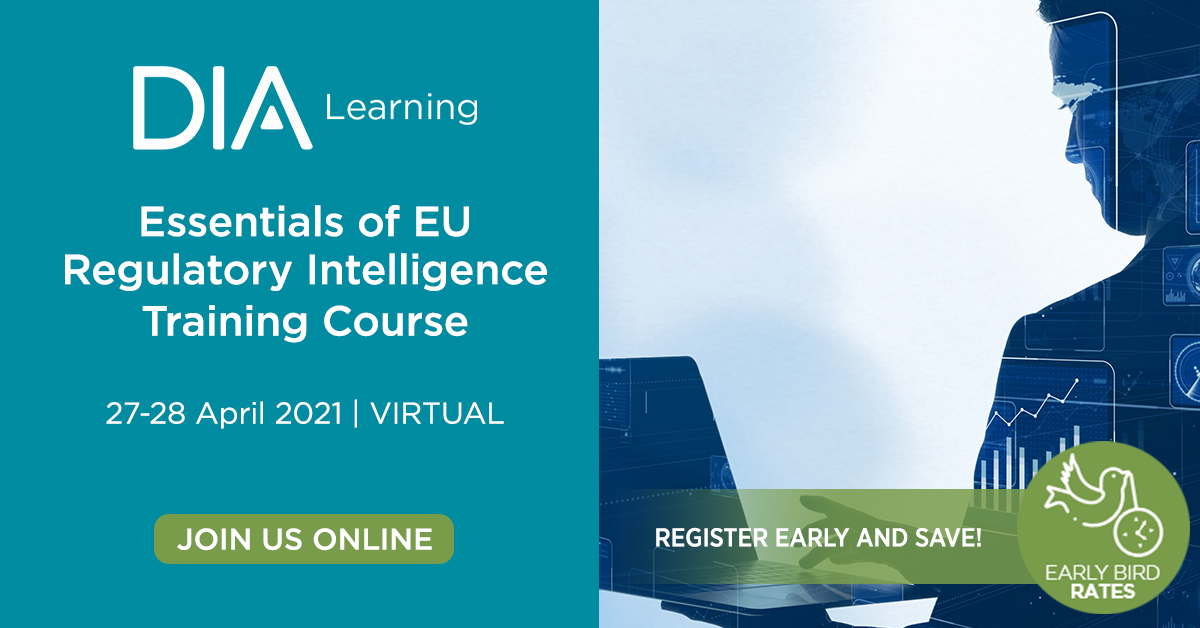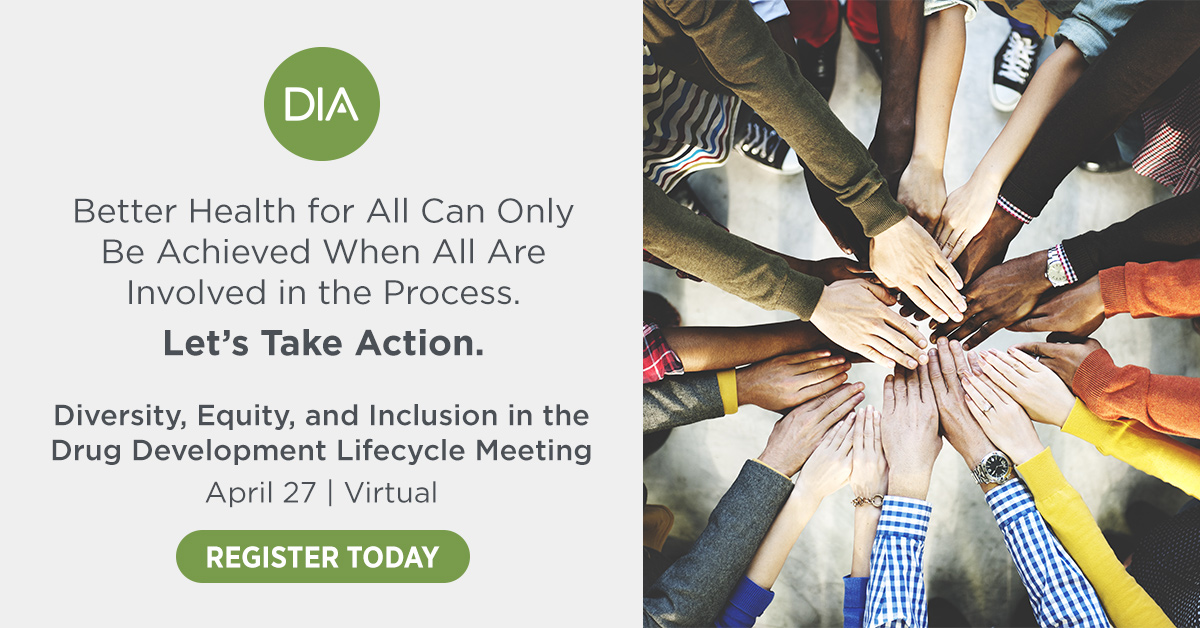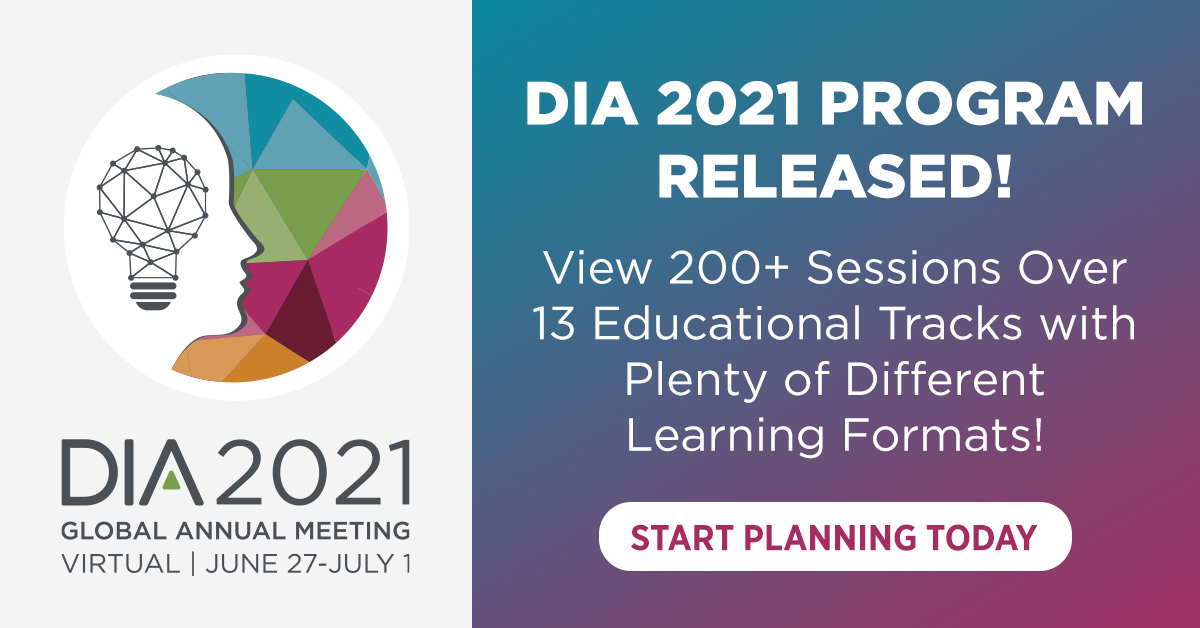Table of Contents
EXECUTIVE LEADERSHIP
Subscribe
Love Global Forum‘s new online format? Subscribe today and never miss an issue.
Editorial Board
Content stream editors
Gary Kelloff US National Institutes of Health
David Parkinson ESSA Pharma, Inc.
regulatory science
Isaac Rodriguez-Chavez PRA Health Sciences
Patient engagement
Trishna Bharadia Patient Advocate and Media Contributor
Mary Stober Murray Bristol-Myers Squibb
VALUE AND ACCESS
Monika Schneider Shionogi
Editorial Staff
Alberto Grignolo, Editor-in-Chief Parexel International
Sandra Blumenrath, Science Writer DIA Scientific Communications
Chris M. Slawecki, Senior Digital Copyeditor DIA Scientific Communications
Regional Editors
David Mukanga Bill and Melinda Gates Foundation
ASEAN
Jin Shun Sandoz
AUSTRALIA/NEW ZEALAND
Richard Day University of New South Wales, Medicine, St. Vincent’s Hospital
CANADA
Judith Glennie JL Glennie Consulting, Inc.
CHINA
Ling Su Shenyang Pharmaceutical University, Lilly Asia Ventures
Europe
Thomas Kühler Sanofi R&D
INDIA
J. Vijay Venkatraman Oviya MedSafe
JAPAN
Ikeda Akiko Janssen Pharmaceutical K.K.
LATIN AMERICA
Cammilla Gomes Roche
USA
Ebony Dashiell-Aje BioMarin
Young Professionals Editors
Saloni Patel Acorda Therapeutics
DIA Membership
Bringing together stakeholders for the betterment of global health care.
Cancer Immunotherapy: Successes and Challenges on the Bumpy Route from Scientific Concept to Clinical Reality
Part 2: Navigating the Road Ahead
ESSA Pharmaceuticals
art I
of this article, published in the February 2021 issue of Global Forum, provided a brief overview of the clinical successes and currently remaining challenges in the field of immune-oncology. The second part of the article discusses considerations for navigating the road ahead in this rapidly evolving field.Improving Inclusive Thinking and Patient Engagement to Boost Clinical Trial Diversity
Parexel
Egality
Tigerlily Foundation
Tigerlily Foundation
Tigerlily Foundation
arely does a one-size-fits-all approach succeed in business, education, or politics, and it should be no different for the delivery of quality healthcare. To ensure everyone has access to safe, effective medications and treatments targeted to each respective population’s needs—regardless of race, ethnicity, gender, age, or socioeconomic status—the treatments we develop must be researched, studied, and evaluated, with representation from diverse populations.
The consequences are real: One study revealed that approximately 20 percent of drugs approved within the previous six years had different exposure and/or response among racial and ethnic groups. Yet, despite a renewed push for diversity, most clinical trials conducted today still fail to represent the demographic diversity of populations that drugs aim to serve.
![]() Podcasts
Podcasts
Nikolai Brun
ISTAT
Novartis
Alkermes
he COVID-19 pandemic has posed enormous challenges to the healthcare systems and economies around the world. As a result of tremendous public-private partnerships, several vaccines are being developed at an unprecedented speed. Because of the complexity of study designs and interim analysis strategies, it is important that communication of clinical trial results (by, e.g., press release) be as clear as possible so there is a good public understanding of the efficacy and safety of these vaccines.
For example, two mRNA COVID vaccines, one developed by Moderna and the other co-developed by BioNTech and Pfizer, received emergency use authorization (EUA) by the US Food and Drug Administration (FDA) in December 2020 based on interim results from their phase 3 trials. The vaccine codeveloped by AstraZeneca and Oxford University was approved by the UK for emergency use based on interim results of two phase 2/3 trials conducted in the UK and Brazil. Clear and accurate communication of trial results like these is instrumental in building public confidence in new vaccines and supporting the rollout of mass vaccination programs after approval.
![]() Podcasts
Podcasts
Lisa LaVange
Richard Zink
Around the Globe
Health Sciences Authority (HSA), Singapore
he ten ASEAN Member States (AMS) have very diverse racial, religious, socio-cultural, political, economic, and geographical backgrounds. Each of these ten AMS faces strong economic competition from other Asian countries and the world at large, especially those with bigger geographical size and population – e.g., South Korea (50 million), Japan (130 million), the two Asian giants India (1.3 billion) and China (1.4 billion), and further away in the western world, the US (300 million) and the EU (450 million). But collectively as a ten-member group, ASEAN is not small.
ASEAN inspectorates are aware that no regulatory authority in this globalized world can work in isolation. The way forward is collaboration, collaboration, and MORE collaboration with ALL stakeholders for a win-win-win outcome: a win for these regulators, a win for the industry, and a win for patients!
Around the Globe
he early months of 2021 have been in stark contrast to those same months in 2020 where much of Australia was ablaze from destructive, devastating, and unprecedented bush fires. Through the La Niña effect, our summer (when the country tends to “shut up shop”) has been wetter, cooler, and, at least on the eastern seaboard, there have been fewer fires. Sadly, Perth, Western Australia has recently lost many homes due to fire, reminding us of the escalating impacts of climate change.
Around the Globe
n January 27, 2021, Health Canada launched a consultation on the development of a National Strategy for High-Cost Drugs for Rare Diseases. The consultations (open until March 26, 2021) are intended to engage Canadians and invite them to share their ideas and views on what a national strategy could look like. The foundation of the consultations is a discussion paper describing key considerations and questions for developing a national strategy for high-cost drugs for rare diseases. Feedback is being solicited through an online questionnaire, written submissions, and/or participation in virtual public town halls.
Around the Globe
Clinical and Research Perspectives from India
Diabetes Specialities Centre and Madras Diabetes Research Foundation
n India, it is generally believed that modern scientific medicines (or “allopathic medicines,” as scientific medicines are called in India) in general–and anti-diabetic drugs in particular–have a lot of side effects and hence should not be taken for long periods of time. I have never really understood how this false belief came about, but it’s quite deeply entrenched in our community. This probably stems from the fact that the ancient Indian systems of medicine such as Ayurveda and Siddha use plant based/herbal products which people perceive to be “safe.” On the other hand, many of these same people believe that modern scientific medicines are believed to be “chemicals” which can cause side effects, if taken for years. Few people realize that plants are also chemicals and that, conversely, many modern scientific medicines are derived from plant products.
Around the Globe
he Latin America region offers a number of registration pathways to accelerate the regulatory assessment of innovative medicines. As the authors of the recent publication Registration pathways to accelerate regulatory assessment of innovative medicines in Latin America in the Journal of Public Health Policy (JPHP), we conducted and published an extensive review of regulatory information collected from 2017 to 2019 for nineteen Latin America (Latam) countries by characterizing the regional regulatory scenario related to accelerated registration pathways and identifying similar opportunities for countries in Latin America. Those findings published in JPHP are summarized here.
Around the Globe
he US Department of Veterans Affairs (VA) is the largest integrated healthcare system in the US. VA delivers care to more than nine million enrolled Veterans at 1,255 healthcare facilities, including 170 VA medical centers and 1,074 outpatient sites of care of varying complexity. This makes the VA system a highly attractive environment for the conduct of clinical research and clinical trials, and a valuable research partner for the biopharmaceutical industry.
The size, scope, and quality of VA research is impressive:
- 79 VA-affiliated non-profit research corporations
- >60% of VA researchers also provide direct patient care
- ~70% of the country’s healthcare providers receive medical training at a VHA facility
- > 100 research sites nationwide
- >3,500 active principal investigators
- >7,000 active funded research projects
- > 10,000 published research articles each year
- ~ $2 billion annual research budget
But these numbers, as usual, only tell part of the story.









